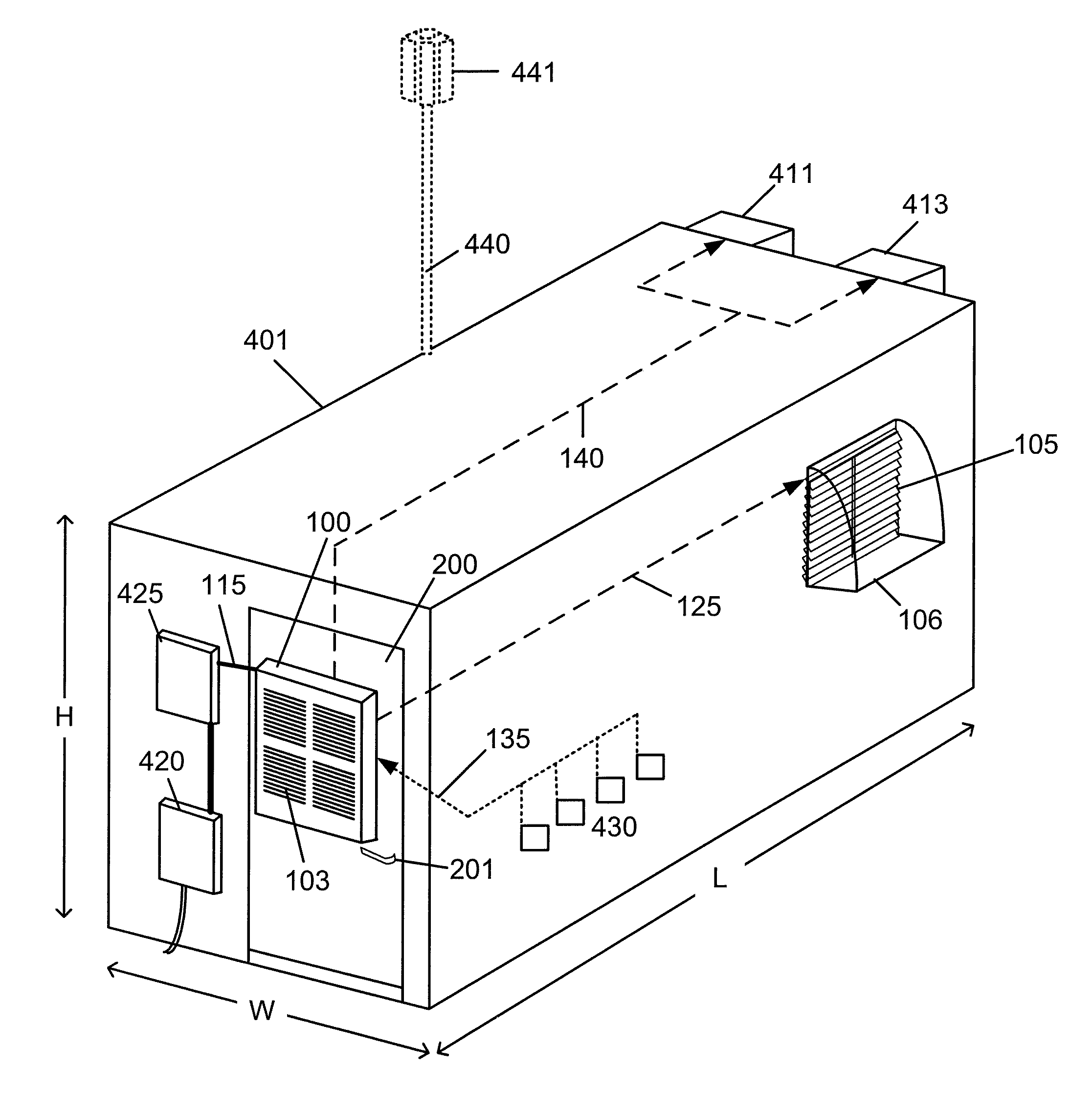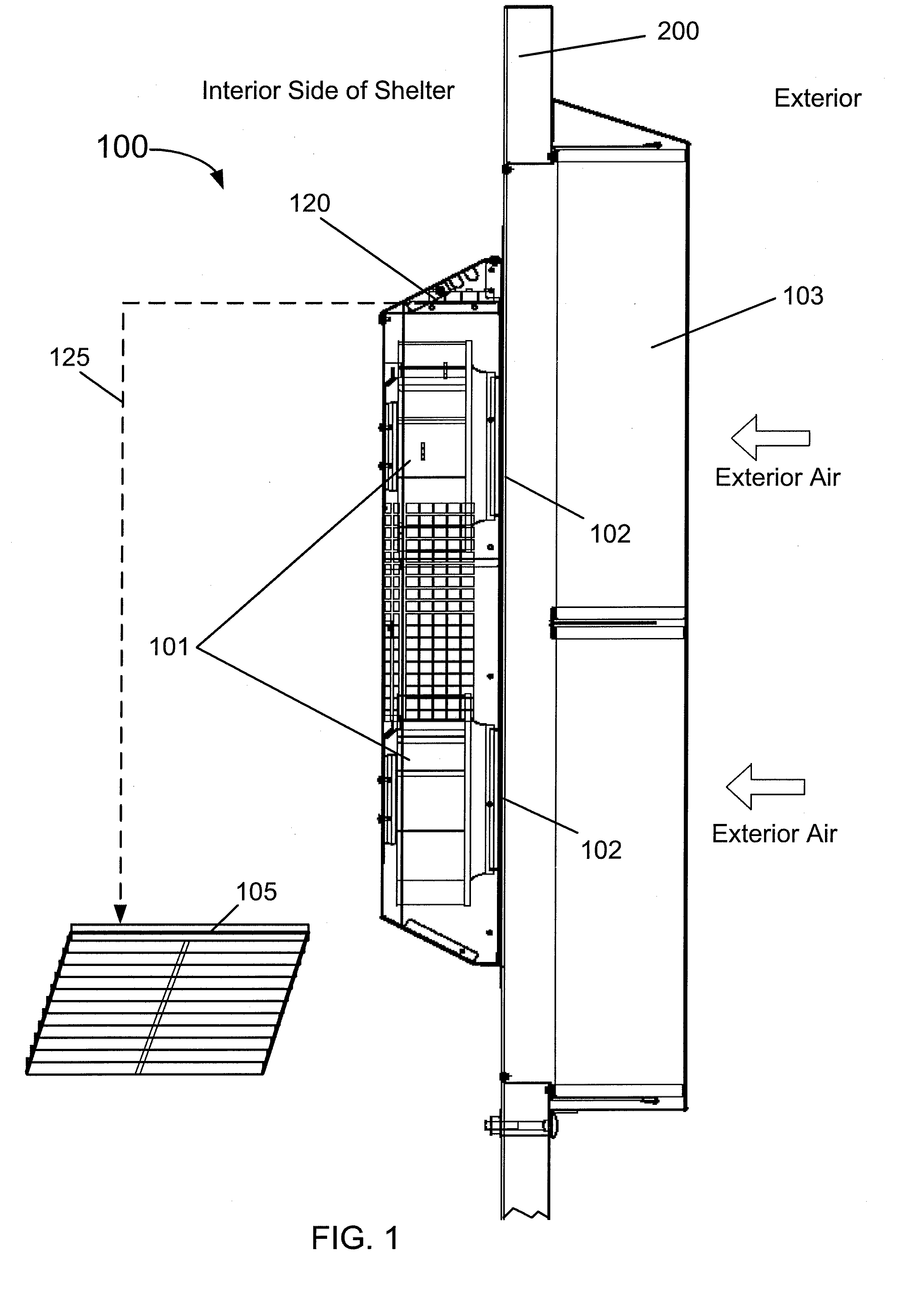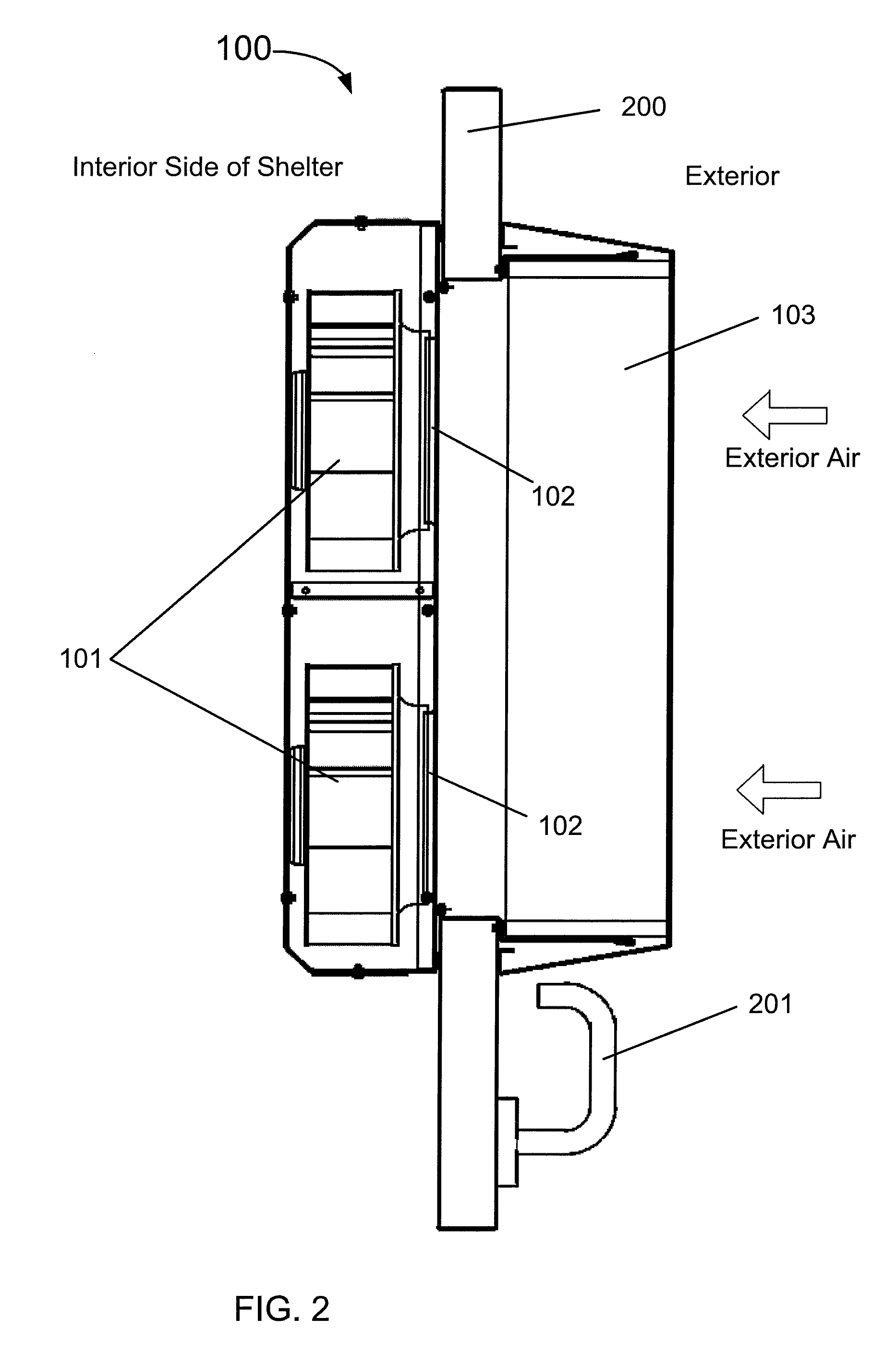Telecom shelter cooling and control system
a control system and telecom shelter technology, applied in vehicle heating/cooling devices, process and machine control, air heaters, etc., can solve the problems of not being practical, not being able to operate for a long time, and being relatively short, so as to accelerate the exhaustion of the shelter and reduce the energy use and operation costs of the telecom shelter.
- Summary
- Abstract
- Description
- Claims
- Application Information
AI Technical Summary
Benefits of technology
Problems solved by technology
Method used
Image
Examples
Embodiment Construction
[0022]The present invention relates generally to system cooling techniques. In particular, embodiments of the present invention provide a method and system for providing an alternate cooling to an outdoor shelter housing electrical equipment. Merely by way of example, the invention has been applied to a telecommunication shelter, but it would be recognized that the invention has a much broader range of applicability.
[0023]FIG. 1 is a schematic diagram showing a side view of a cooling system according to an embodiment of the present invention. This diagram is merely an illustration and should not limit the scope of the claims herein. One of skilled in the art should recognize many alternatives, variations, and modifications. As shown in one implementation, a direct air cooling system 100 is structured to be mounted on a position of a shelter door 200 (side view is shown). At least partially, the direct air cooling system 100, or simply called the cooling system, includes one or more ...
PUM
 Login to View More
Login to View More Abstract
Description
Claims
Application Information
 Login to View More
Login to View More - R&D
- Intellectual Property
- Life Sciences
- Materials
- Tech Scout
- Unparalleled Data Quality
- Higher Quality Content
- 60% Fewer Hallucinations
Browse by: Latest US Patents, China's latest patents, Technical Efficacy Thesaurus, Application Domain, Technology Topic, Popular Technical Reports.
© 2025 PatSnap. All rights reserved.Legal|Privacy policy|Modern Slavery Act Transparency Statement|Sitemap|About US| Contact US: help@patsnap.com



